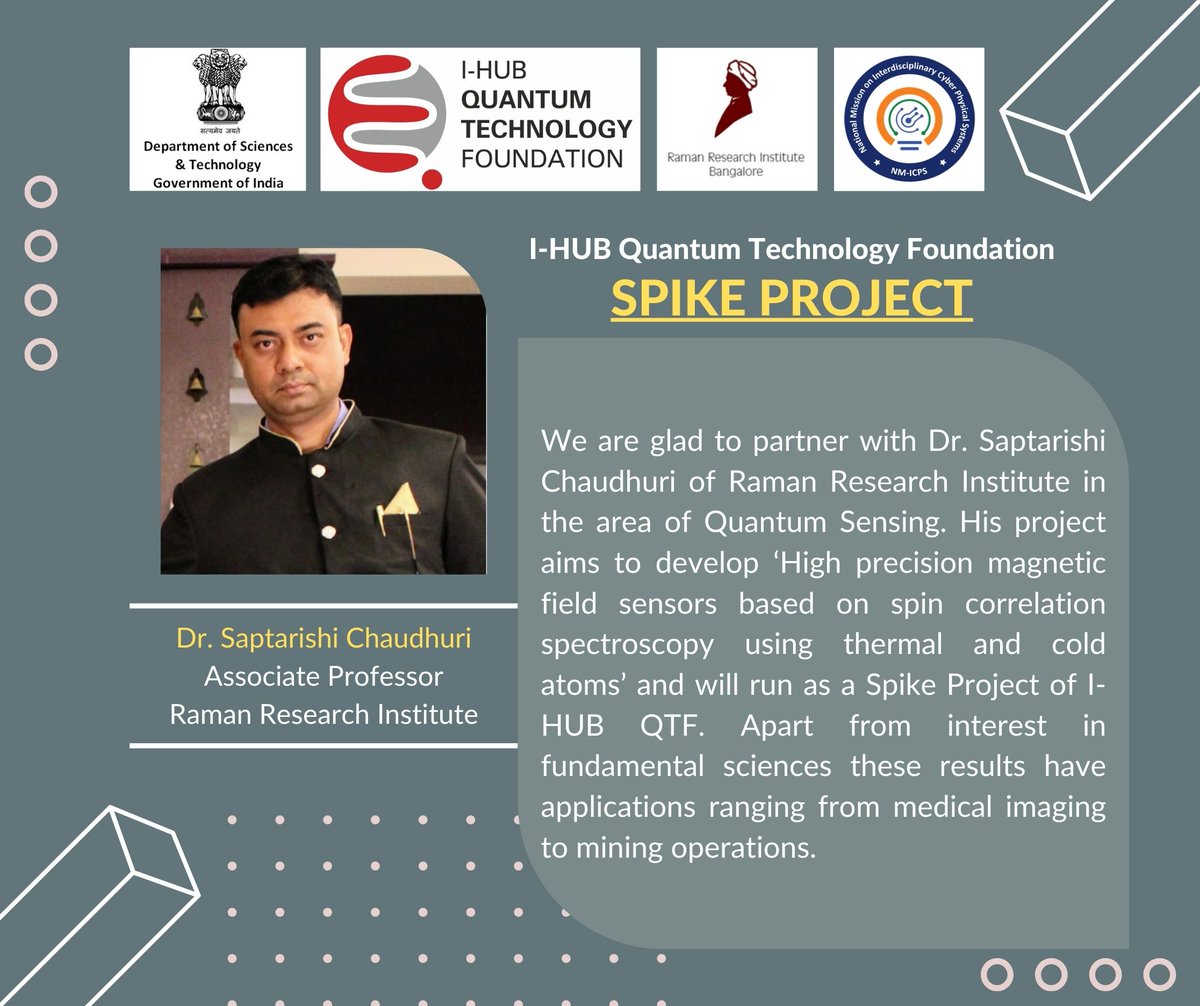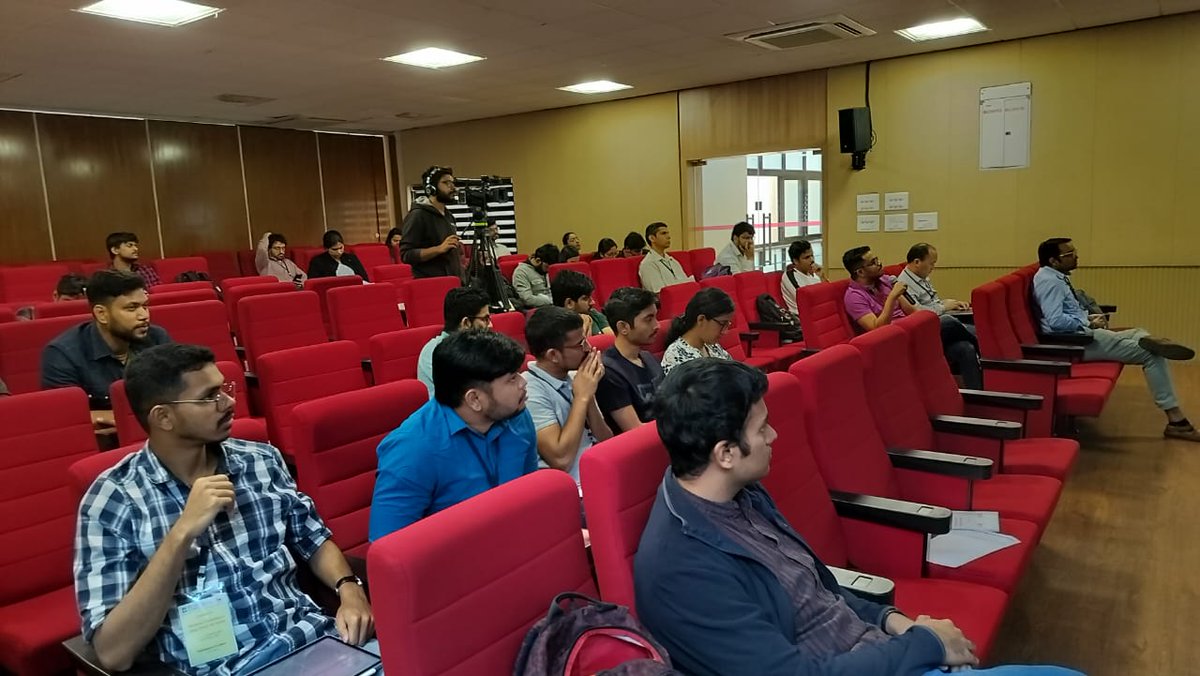
Saptarishi Chaudhuri
@wrishic
Researcher
ID: 74518821
15-09-2009 18:37:32
20 Tweet
25 Takipçi
70 Takip Edilen

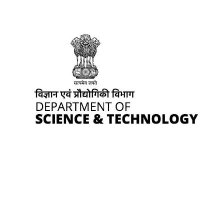
Correlations between waves in atomic systems or spin coherences are long-lived at ultralow temperatures, says a new study by Raman Research Institute #Scientists who have developed a new #technique to measure it. Dr Jitendra Singh chandra Srivari ➡️dst.gov.in/long-lived-cor…
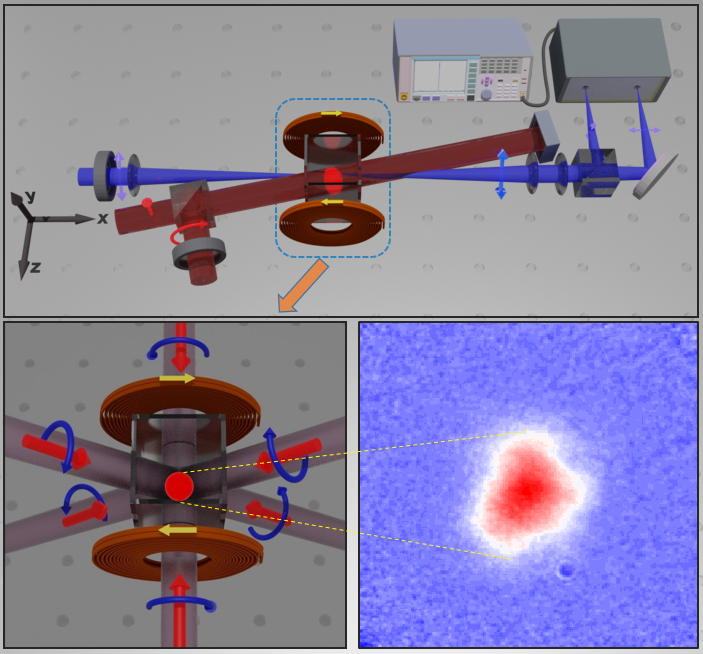


Happy to announce that our group has developed an Atomic Gravimeter (A Quantum Tech device) with 1ppm sensitivity using Bose-Einstein Condensate. Now we can measure 'g' to six decimals. Working for better sensitivity and transportability IISER Pune Pranab dutta S Sagar M


Highly excited Rydberg atoms provide framework for preparing atomic qubits for quantum information processing. Dr Jitendra Singh chandra Srivari Raman Research Institute Tarun Souradeep 🔗dst.gov.in/highly-excited…


#Scientists Raman Research Institute have performed precision measurements of transition #frequencies of highly excited #Rydberg states, providing a framework for preparing ideal candidates for #quantum information processing as well as for atomic #sensor #Technologies .
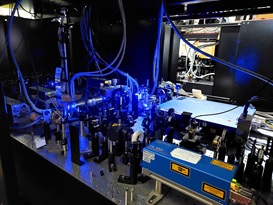


Delighted to host #Nobel Laureate Prof. Serge Haroche Raman Research Institute. He visited our labs and had engaging interactions with RRI faculty and PhD students!! DSTIndia Principal Scientific Adviser, Govt. of India Dr Jitendra Singh Dr Akhilesh Gupta chandra Srivari Tarun Souradeep
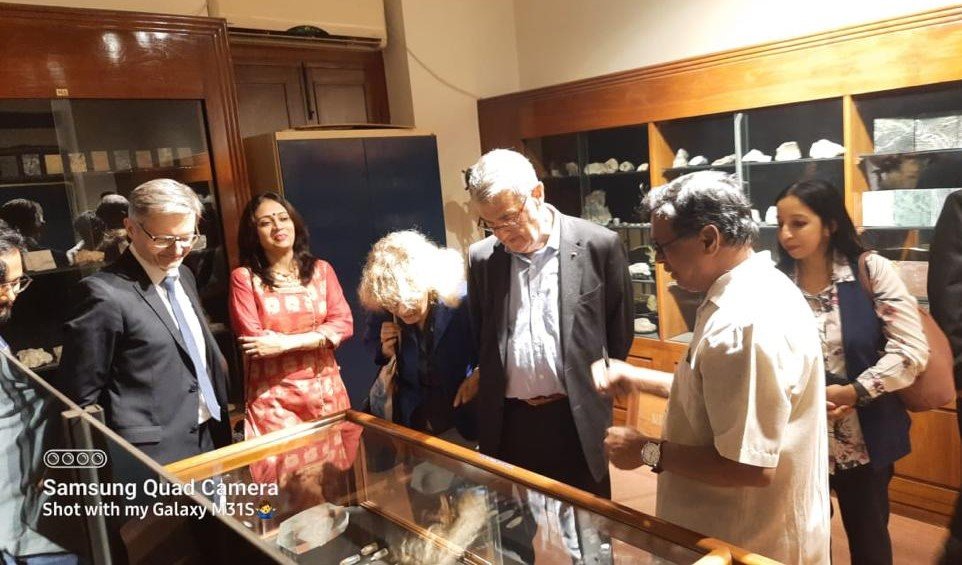


QET Council of India ( QETCI) is organizing a Quantum Sensors Webinar today @ 4:30 PM IST. Saptarishi Chaudhuri, Raman Research Institute, is one of the expert speakers. Register here: bit.ly/qsensors DSTIndia Principal Scientific Adviser, Govt. of India Dr Jitendra Singh Rajesh Gokhale Dr Akhilesh Gupta Tarun Souradeep Reena Dayal


Know more about #Quantum Sensing research using Rydberg atoms Raman Research Institute, in a detailed article by Sanjukta Roy. Also find special mention of RRI scientist Saptarishi Chaudhuri in Quantum Vibes, the latest C-DAC India Newsletter. quantumindia.net/wp-content/upl… DSTIndia Principal Scientific Adviser, Govt. of India



(10/n) While pursuing her PhD Tata Institute of Fundamental Research, Sanjukta Roy (Raman Research Institute) created the first Bose-Einstein condensate (BEC) in India. She takes us through the essential steps in realising the BEC: laser-cooling and trapping of atoms & evaporatively cooling to 140 nK in less than 1s.


Day 1 of Conference ‘QT using Ultracold Atoms’ ended with enriching sessions by Filippo Gambetta (Phasecraft), Silpa B S (Raman Research Institute), Ratheejit Ghosh (IISER Pune), Rajnandan Das (IIT Guwahati), @Sandra M Jose (IISER Pune) & Swarup Sarkar (IIT Guwahati) Stay tuned for more.



This work was also highlighted in major newspapers and other media deccanherald.com/science/rris-n… thehindu.com/sci-tech/scien… indiatoday.in/science/story/… PMO India Dr Jitendra Singh Principal Scientific Adviser, Govt. of India Abhay Karandikar Tarun Souradeep Gourab Pal Saptarishi Chaudhuri

QuMIX lab head Saptarishi Chaudhuri and PhD student Anirban Misra, Raman Research Institute observed the distinct transport properties of ultra-cold atoms in a quantum system. Link: pib.gov.in/PressReleasePa… PMO India Principal Scientific Adviser, Govt. of India DSTIndia Dr Jitendra Singh Abhay Karandikar Tarun Souradeep
